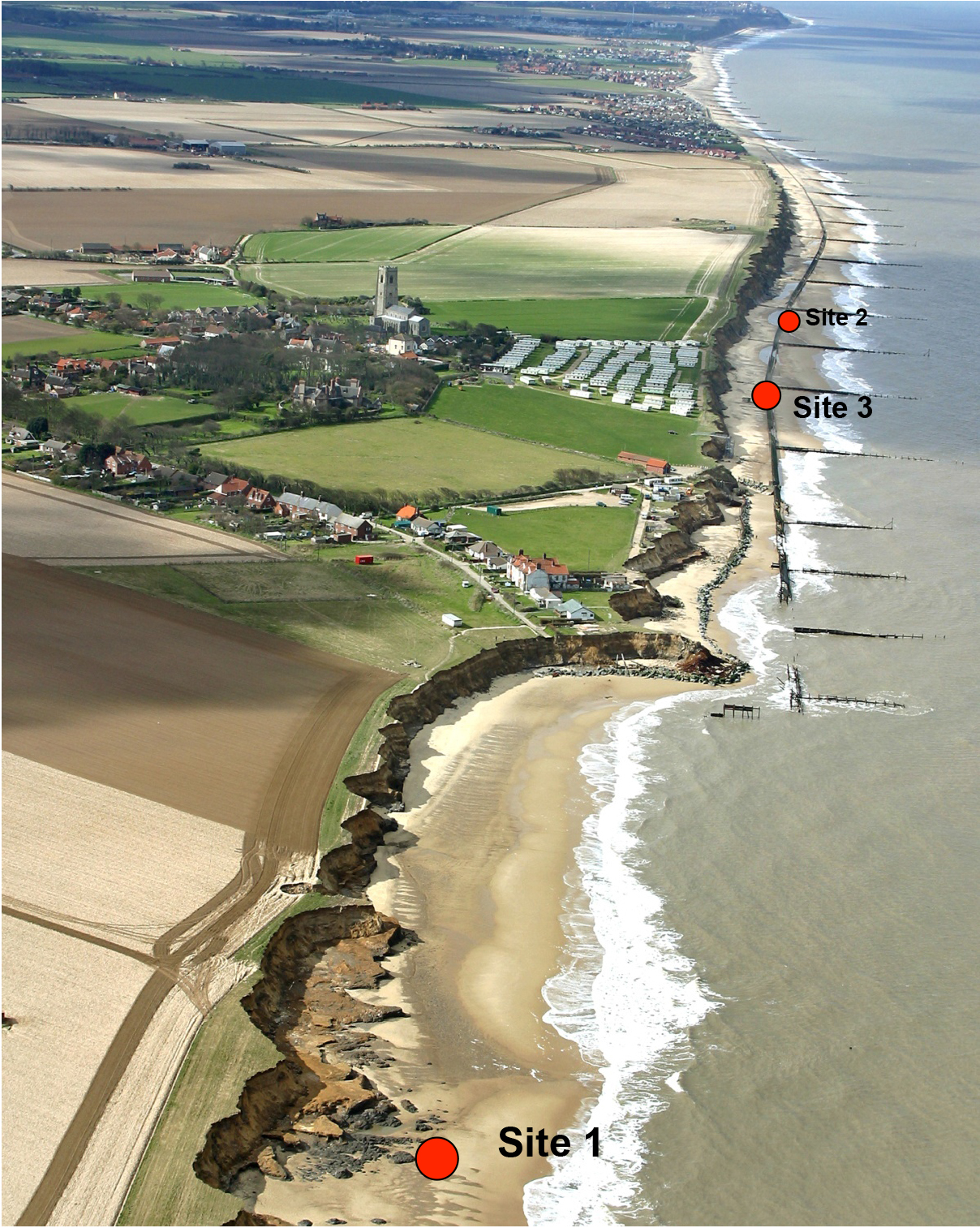
The site at Happisburgh lies on the foreshore about 1 km to the south of the village. It was first discovered by local resident Mike Chambers in 2000 when he recovered a handaxe lying in organic mud. Fieldwork by AHOB (2004) and the University of Leiden (2009-2012) have excavated the organic muds and underlying organic clays and sands for the recovery flint artefacts, fauna and flora (Ashton et al. 2008). The sediments infill a channel that lies beneath the cliffs formed of Anglian glacial sediments (MIS 12). The sediments form part of the Cromer Forest-bed Formation and have been attributed to a late Cromerian Complex age (probably MIS 13) based on the presence of Arvicola cantiana. The combination of faunal and floral remains indicates marshland on the edge of a slow-flowing river with surrounding heathland and boreal forest in a cool-temperate climate (Coope 2006; Ashton et al. 2008). The in situ flint assemblage consists of almost 300 flakes, simple flake tools, cores and a single, thin, ovate biface. The archaeological evidence also comprises humanly modified bones of rhinoceros, roe deer and bovid, indicative of butchery by humans.
Nearby Site 3 is between 800,000 and 950,000 years old, containing the oldest evidence of human occupation of northern Europe at a time when the climate was similar to today.
Archaeological Summary
Artefacts from AHOB (2004), Norwich Castle Museum (collected 2000-2011), Leiden (2009-12)
Fieldwork |
AHOB |
NCM |
Leiden |
Context |
Organic mud/clay |
Organic mud/clay |
Organic silty sand |
Handaxe |
0 |
1 |
0 |
Flake tools |
4 |
0 |
5 |
Cores |
1 |
2 |
10 |
Flakes |
33 |
33 |
84 |
Chips |
32 |
0 |
43 |
|



